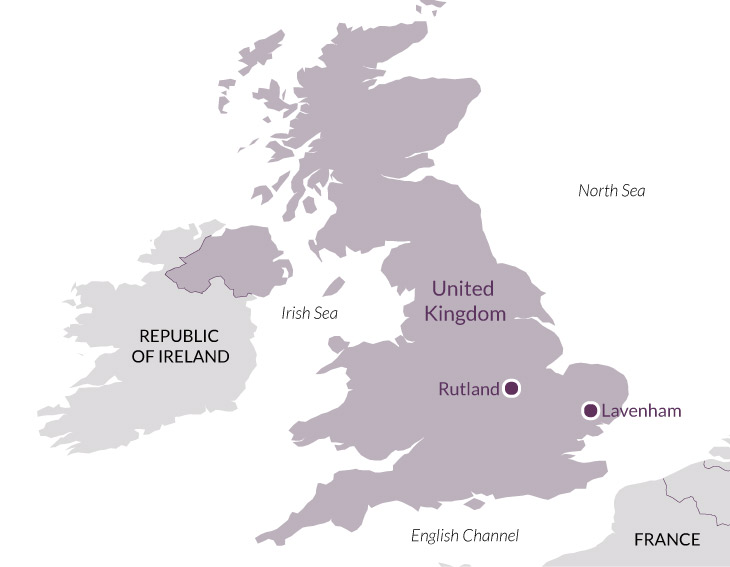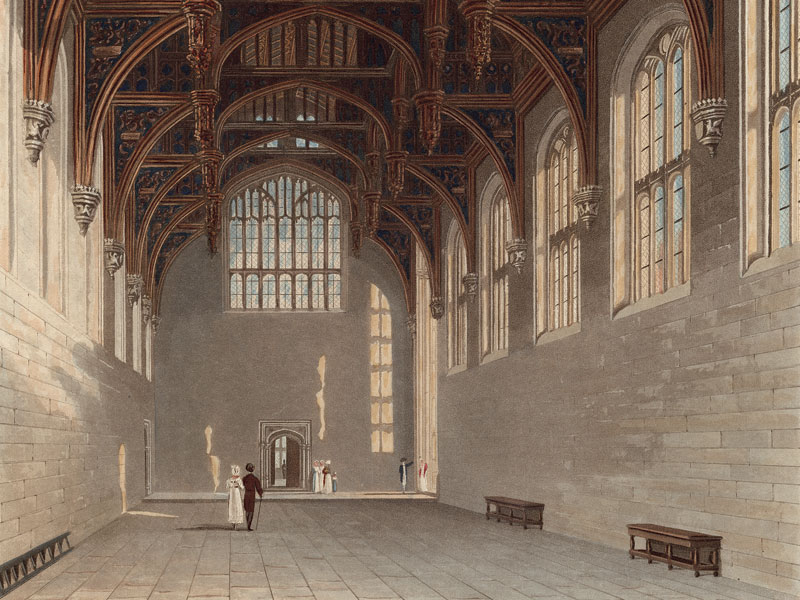Overview
The defeat of Richard III by Henry Tudor in a Leicestershire field on August 22, 1485, heralded a glorious age over which the Tudor monarchs would preside for the next 118 years. Out of the turmoil of the Wars of the Roses a new social and economic order emerged: an age of discovery, trade and commerce, in which the old mediaeval aristocracy was joined by a prosperous new class of bureaucrats at court and a wealthy merchant class in towns and cities. This tour explores the legacy and interests of the Tudor gentry and nobility through the prism of some of their finest surviving monuments in the south-eastern counties. Many of them owe their existence to the flourishing wool trade.
Under Henry VIII vast estates of the monasteries passed into new hands; house-building was now dominant rather than lavish spending on churches. The ambition to demonstrate wealth through these buildings is clear from all levels of society down to even the lesser gentry. Gainsborough Old Hall is one of the largest and most complete brick and timber-framed manor houses in England; Ellys Manor House contains rare survivals of sixteenth-century interior decoration; the immense gatehouse at Layer Marney has delicate Renaissance ornament in the form of its windows. The list goes on.
The visual arts were complemented by a great flourishing of the musical and literary arts that have made some of the great works of the late-sixteenth century stand out as the quintessential products of the Elizabethan age. The achievements of John Caius at Cambridge, manifest in a series of gateways to his college, mark the absorption of new approaches to classical learning into English education, while the great house at Burghley, completed by William Cecil, uses tradition and innovation in design and ornament fit for Elizabeth’s first minister and ready to receive the Queen herself.
Day 1
Hatfield. Leave London at 10.15am. Henry VIII’s three children spent much of their childhoods at Hatfield, and of the palace the great hall survives. A collection of Tudor portraits reveals the creation of a dynasty. First of three nights in Rutland.
Day 2
Kirby Hall, Burghley House. In taste and ambition these great houses, owned by two of Elizabeth I’s closest and most powerful courtiers, epitomise the standing achieved by the Queen’s favourites. Magnificent Burghley House, perhaps the finest Elizabethan house in England, was built by William Cecil in a palatial compound of mediaeval, classical and pseudo-classical styles. Kirby was completed with precocious classicism by Sir Christopher Hatton; though now partly ruined, it remains extraordinarily impressive. The handsome Cecil funerary monuments are in St Martin’s Church, Stamford. Overnight Rutland.
Day 3
Gainsborough Old Hall, Ellys Manor. Dating from the mid-15th century, Gainsborough Old Hall played host to Richard III in 1483 before the owner, Sir Thomas Burgh, switched allegiance to Henry Tudor. Sources suggest that Henry VIII may also have spent a night here. In addition to the formal rooms a remarkably intact suite of service interiors has survived. Built by an international wool merchant in the late-15th century, Ellys Manor has continental influences throughout and exceptional 16th-century wall paintings, ‘a rare English interpretation of French verdure tapestries’ (Pevsner). Overnight Rutland.
Day 4
Cambridge. Though begun in 1446 by Henry VI, King’s College Chapel acquired its present form during the reign of Henry VIII. Combining the very best of Tudor era architecture, stained glass, sculpture and furnishings, this is one of the world’s greatest buildings. The three splendid gateways created in the 1550s–70s at Gonville & Caius College are remarkable for their Renaissance design and symbolism. Trinity was founded by Henry VIII in 1546; the university’s largest and wealthiest college was endowed with land from dissolved monasteries. (Visits on this day are subject to change as Cambridge colleges may close to the public at short notice). First of two nights in Lavenham.
Day 5
Coggeshall, Paycocke’s House, Layer Marney. The village of Coggeshall, Essex, has many fine Tudor buildings of which Paycocke’s House (1509–10) is the most impressive; fine beam-work, panelling and other rare survivals. The abbey was granted to Sir Thomas Seymour, brother to Jane, by Henry VIII, and the 16th-century manor house incorporates elements of the monastic complex. Had it been completed, Layer Marney would have rivalled Hampton Court in splendour. The spectacular Tudor gatehouse with its Italianate decoration is the tallest in England. Henry VIII and Elizabeth both visited. Overnight Lavenham.
Day 6
Otley Hall. Beautiful, moated Otley Hall was the seat of Bartholomew Gosnold, who rallied support to plant an English colony in north Virginia; in 1602 he landed on Cape Cod and Martha’s Vineyard, named after his deceased daughter. Set in 10 acres of gardens, Otley’s exterior has splendid chimneys, brickwork and vine leaf pargetting. Inside, wall paintings commemorate a marriage of 1559, and the Great Hall and Linenfold Parlour are unequalled in Suffolk. The tour finishes at Ipswich Railway Station by 1.00pm.
Price per person
Two sharing: £1,810. Single occupancy: £2,100.
Included
Hotel accommodation; private coach throughout; breakfasts, five dinners with wine; all admissions; all tips; the services of the lecturer and tour manager.
Accommodation
Barnsdale Lodge Hotel, Rutland, housed in an extended old farmhouse close to Rutland Water. Public rooms and bedrooms are arranged around a courtyard and have a traditional, country décor. The Swan, Lavenham: dating from the 15th century, The Swan has been an inn since 1667; rooms have been recently renovated yet retain their historical character; excellent restaurant. Single rooms are doubles for sole use throughout.
How strenuous?
Unavoidably, there is quite a lot of walking on this tour and it would not be suitable for anyone who has difficulties with everyday walking and stair-climbing. Coaches can rarely park near the houses, many of the parks and gardens are extensive and the houses visited don’t have lifts. Average distance by coach per day: c. 77 miles.
Are you fit enough to join the tour?
Group size
Between 10 and 22 participants.
Tour combinations
Combine with our London Day The Tudors, 7 May 2019.

